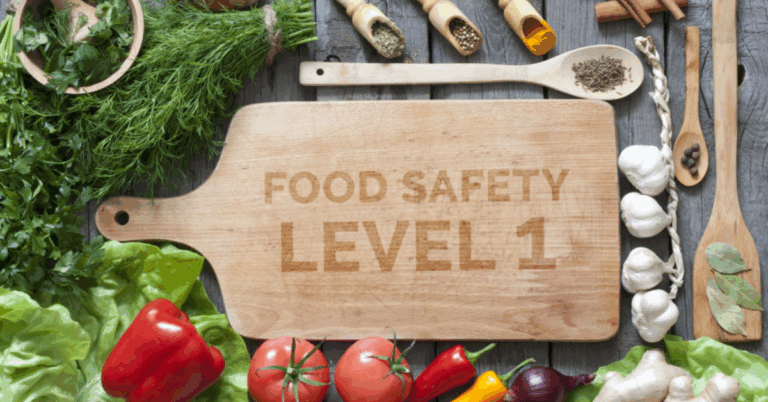The Vital Role of a Food Hygiene Cert: Protecting Health, Building Trust
In today’s food landscape, one credential holds the power to elevate both safety standards and consumer confidence — the Food Hygiene Cert. Whether you’re a restaurateur, a street food vendor, or part of a corporate catering team, obtaining a Food Hygiene Certificate symbolizes commitment to cleanliness, food handling best practices, and public health. With increasing regulatory scrutiny and far greater consumer awareness around foodborne illnesses, having that certificate is no longer optional — it’s foundational.
1. What Is a Food Hygiene Cert?
A Food Hygiene Certificate is an official document awarded to individuals (or sometimes to establishments) after they complete training in food safety, handling, storage, and sanitation. It typically covers basic to advanced levels of food hygiene, depending on the course you enroll in. The certificate confirms that the holder understands critical principles such as cross-contamination prevention, temperature control, personal hygiene, and cleaning protocols.
A number of training providers offer such certification, often in multiple tiers (basic, refresher, advanced) to match the learner’s role and responsibilities.
2. Why Food Hygiene Certification Matters
(a) Preventing Illnesses and Protecting Public Health
Foodborne illnesses are a serious global issue. Improper handling, storage, or cleaning can lead to bacterial outbreaks (like Salmonella, E. coli, Listeria), causing harm to customers and exposing businesses to liability. A Food Hygiene Cert ensures that staff are taught how to prevent such situations.
(b) Regulatory Compliance
Many jurisdictions require food service businesses to have certified personnel on staff, especially for supervisory roles. Without it, you may face fines, closures, or legal repercussions.
(c) Enhancing Reputation & Trust
Consumers today are more informed and vigilant about food safety. Displaying that your staff are certified reassures patrons that you take hygiene seriously — a competitive differentiator in the food industry.
(d) Operational Efficiency & Waste Reduction
Proper food handling, storage, and monitoring minimize spoilage and waste. Through certification, staff learn to optimize processes, thus reducing costs tied to discarded or contaminated items.
3. What You Learn in a Food Hygiene Course
While curriculum varies among providers, comprehensive Food Hygiene training generally includes:
-
Introduction to foodborne diseases: Understanding pathogens, vectors, symptoms.
-
Personal hygiene and health: Handwashing, protective clothing, illness reporting.
-
Cross-contamination control: Separating raw and cooked items, using color-coded tools.
-
Temperature control & cold chain management: Safe storage, cooking, cooling, reheating.
-
Cleaning & sanitation: Effective cleaning regimens, disinfectants, schedules.
-
Pest prevention: Identifying, controlling, and managing pests.
-
Food premises layout & flow: Design that minimises contamination risk.
-
Food legislation & responsibilities: Regulations, roles, audits, record keeping.
Many courses also include a practical component or assessment to ensure theoretical knowledge gets applied.
4. Levels & Refresher Training
Most certification frameworks are tiered. Beginners may start with a Basic Food Hygiene Course (Level 1), progressing through Intermediate or Level 2, and even Advanced or Level 3 for managerial responsibilities. After certification, regular refresher courses help maintain current knowledge and adapt to evolving safety standards and regulations.
For example, a refresher might cover new pathogen risks, updated regulatory requirements, or best practices introduced since the original training.
5. How to Choose a Training Provider
When selecting a training provider for your Food Hygiene Cert, consider the following:
-
Accreditation & Recognition: Ensure that the certificate is recognized by local health authorities or relevant regulatory bodies.
-
Curriculum Breadth: The program should cover all essential modules — hygiene principles, safety, legislation, and operations.
-
Practical Components: Hands-on training or real-life scenarios ensure better retention.
-
Flexible Delivery Modes: Instructors, in-person classes, or hybrid formats offer flexibility.
-
Refresher and Continuing Support: A good provider offers follow-up courses or updates as standards evolve.
-
Trainer Expertise: Trainers should have relevant qualifications and real-world experience in food safety.
6. Challenges & Common Misconceptions
Misconceptions:
-
“It’s just a formality — anything goes in kitchens.” Not true. Without strict adherence, accidents and outbreaks can occur.
-
“Once certified, you’ve “done it forever.” Health threats evolve; ongoing education is required to stay current.
-
“Certification alone guarantees perfect behavior.” Training is a foundation, but organization-level enforcement and culture matter.
Challenges:
-
Language & Literacy Barriers: Not all food handlers may have strong reading or comprehension skills; training must adapt.
-
Cost & Time Constraints: Small vendors may struggle with training fees or shutting operations temporarily.
-
Implementation Gaps: Knowing best practices is one thing; consistent application—especially under pressure—can lag.
7. Impacts on Business and Community
A well-implemented Food Hygiene certification program has ripple effects:
-
Reduced incidents of food poisoning, leading to fewer healthcare costs and better public trust.
-
Stronger brand reputation invites more business from discerning customers.
-
Lower operational losses through less spoilage, fewer returns, and better efficiency.
-
Legal protection in disputes or inspections.
-
Community uplift when multiple establishments adopt high hygiene standards, raising overall public health resilience.
8. Real-World Scenario: From Training to Daily Operation
Imagine a café that just obtained Level 1 Food Hygiene certification for its staff. On day one post-certification:
-
Kitchen staff begin color-coding utensils and strictly segregating raw meats and ready-to-eat items.
-
Temperatures in fridges are logged three times daily; deviations trigger immediate actions.
-
Daily cleaning checklists ensure that all surfaces, equipment, and utensils are sanitized at appropriate intervals.
-
Staff report minor health issues (e.g. minor coughs or rashes) immediately instead of ignoring them.
-
Management schedules quarterly refresher drills to simulate contamination scenarios and stress test their readiness.
Over a few months, waste from spoiled food drops, customer complaints about hygiene decline, and the café earns a reputation for cleanliness. Eventually, health inspectors come with confidence and give clean reports — the investment in the Food Hygiene Cert shows dividends.
9. Tips for Maximizing the Value of Your Certification
-
Embed it in your culture rather than treating it as a checkbox.
-
Periodically audit compliance — use mystery shoppers, internal inspections.
-
Encourage feedback & open communication: staff should feel comfortable raising hygiene concerns.
-
Stay current with updates in food law, microbial threats, or industry innovations.
-
Integrate with other systems like supplier verification, traceability, and hazard analysis programs.
Conclusion
In an era where a single foodborne outbreak can tarnish a business, the Food Hygiene Cert is more than a paper credential — it’s a lifeline. It empowers food handlers with knowledge, safeguards public health, ensures regulatory compliance, and strengthens reputations. But its value lies not just in earning the certificate, but in embedding its principles into every stage of food operations, from procurement to preparation to service. Choose a credible training provider, commit to continual learning, and let that certification translate into consistent, visible hygiene discipline — for your customers, your business, and your community.







